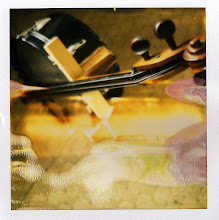Lester Bowie (trumpet, fleugelhorn, bass drum, horns); Roscoe Mitchell (soprano sax, alto sax, bass sax, clarinet, flute, flute, cymbals, gongs, conga drums, logs, bells, siren, whistles, steel drum, etc); Joseph Jarman (soprano sax, alto sa, clarinet, oboe, flute, marimba, vibes, conga drums, bells, whistles, gongs, siren, guitar, etc); Malachi Favors (bass, fender bass, banjo, log drums, cythar, percussion, etc); Fontella Bass (vocals).
Ken Burns--that “innovative” documentary maker, famous for zooming in on, and panning across photographs--once made the belittling remark that the AACM (Association for the Advancement of Creative Musicians) only really catered for “white college students--in France”. Granted there was a large market for avant-jazz related music in France in the 1960’s and 70’s; but what Ken failed to acknowledge when he said this, was that the AACM were pivotal in creating one of the first independent music economies to provide black people--living in disadvantaged areas of Chicago--with an outlet for a serious avant-garde / intellectual voice. What’s more is that the group ran on an egalitarian system that utilised the power of the individual; one of the first independent music industries to do so and achieve some form of success. Nice work Ken. I can’t wait for your next “innovation”.
Perhaps the most famous of the AACM drove is The Art Ensemble of Chicago (AEOC). Guided by Lester Bowie’s compositional strength, and driven by Roscoe Mitchell’s playing ability, AEOC emigrated to Paris in the late 1960’s (often considered their best period) and, in a very short time, produced a prolific amount of work including: Message to Our Folks; Les Stances A Sophie (the soundtrack to the film of the same name); The Art Ensemble of Chicago with Fontella Bass, alongside numerous enigmatic live performances, focusing on black music history, or as they aptly put it “great black music”.
One of these performances (on the 5th of October 1969) was documented and initially released as two separate releases (Live Part 1, and Live Part 2), each covering one piece, on BYG in Japan; then re-released as a double LP on the Actuel revival label Charly in 1981. Despite the production lacking a little in clarity, the record offers up a notable insight to the AEOC’s dexterity within their earlier performances. Perhaps not as structurally concise as their later live performances, there are still the distinguishable elements: unity; the individual; identity, and so on. Obvious compositional comparisons exist to the work of Sun Ra; largely because of the ambiguity behind the deliberation and the spontaneity in the pieces, and how this is furthermore structured within them.
The first piece “Oh, Strange” is somewhat sombre in tone, and is perhaps stronger in narrative than the second piece “Bon Voyage”. My interpretation is of African American history, starting off with theme that hint at African heritage; heavy communal percussion (a drum-kit that has been spread throughout the band members, reinforcing the notion of unity and the individual) with delicate voice (here echoed in saxophone and trumpet melodies and improvisations) ringing out over the top. However, as these melodies become darker and more desperate, the reparative drum patterns take on a new contextual meaning, referencing American slavery. The piece eventually resolves into more disparate playing, deliberately empty with a cold tonal centre. The change in dynamic, as well as a change in instrumentation (vibes, bass clarinet, odd stringed instruments, subtle electronic effects… etc, at times comparable to middle period Harry Partch), seems to be commenting on 1960s African American culture; an intellectual voice, that is still being suffocated by a largely belligerent white bourgeoisie.
“Bon Voyage”, however, starts off from the point of a full-on “freak out“, before centring itself around a two-note bass groove provided by Malachi Favors, and poetry sung by Bowie’s wife Fontella Bass. Again the choice of instrumentation remains to be interesting, this time using: oboes; marimbas; flutes; sirens; bells; as well the more conventional “jazz” set-up, which leads to an aggressive yet more spiritual upheaval than the first piece, without falling wind of other corny spiritual jazz composition.

